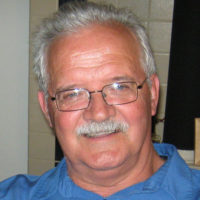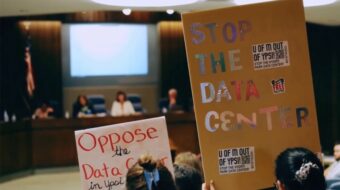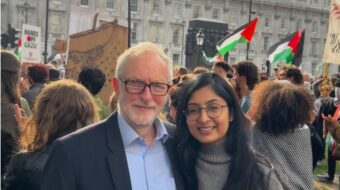Last year at this time, tens of millions had high hopes for 2009. Americans had just elected the first African American president, whose campaign message, “Change We Can Believe In,” heralded a new direction for the country – more decent, more peaceful, more just.
A year later, many of those hopes are still unfulfilled. The “Change We Can Believe In” has not yet materialized for many. How do we explain the slow pace of change? For many progressive and left people the answer, the problem, is Barack Obama.
I understand,” writes Naomi Klein in a recent article, “all the arguments about not promising what he can’t deliver, about the dysfunction of the U.S. Senate, about the art of the possible. But spare me the lecture about how little power poor Obama has. No president since FDR has been handed as many opportunities to transform the U.S. into something that doesn’t threaten the stability of life on this planet. He has refused to use each and every one of them.”
And after citing the stimulus package, the auto bailouts, the bank bailouts, and the Copenhagan climate change conference, she concludes, “There are very few U.S.presidents who have squandered as many once-in-a-generation opportunities as Barack Obama.”
Harsh talk and militant to boot, but the salient question is: is it a good analysis? Is it class-based? Does it capture the complexity of the process of change? Does it really understand the parameters of the possible at this moment? Does it give the broader movement a political lead going forward? I say no! In saying so I can almost hear some readers screaming that am I letting the president off the hook. To a degree I am.
I’m not into the “great leader” theory of history. The president is a change agent and a powerful one at that. He can facilitate or impede change, but he is not the only one nor does he possess a magic wand. He doesn’t govern in a vacuum, as Klein in the end suggests.
On the playing field of politics, we find other change makers as well as change resisters, all of whom figure into the equation of social change.
To begin, right-wing extremism is very much alive. Though no longer dominant, it still possesses enormous power, stubbornly resists even the smallest reform measures, and is intent on making the country literally ungovernable.
Then there is the Congress. While the Democrats have a majority, in neither the Senate nor the House is it a progressive majority. Hopefully that will change in the elections coming up this fall.
To this we have to add the “big dog” – corporate capital. Its organizing principle is to either resist or contain the process of progressive and radical change. Its leverage stems from its domination of the economic, political and cultural institutional forms of our society. Of course this fact doesn’t prevent a broad people’s movement from rolling back corporate power and making progressive ideas the common wisdom of tens of millions (people’s needs first) in each of these social domains.
Finally, organized movements for progress and organized reactionary movements, to the degree that they mobilize sections of the American people, are actors in the political process.
Thus, singularly focusing on the president narrows down our field of vision. It conceals – hiding the whole complex of forces advocating and resisting change – more than it reveals. It tells us little about the parameters of the possible and what we need to do, strategically, tactically and programmatically, to stretch them. It only leads to frustration or worse yet, amplifying the chorus of abuse directed at the country’s first African American president.
It also lets us – the left, progressives, the broader movement – off the hook. To no small degree, criticism of Obama can easily become a substitute for a close examination of our inadequacies and inability to activate and mobilize the movement that elected him last fall. Wouldn’t we be well served to look into the mirror?
Let’s face it. Today’s popular insurgency doesn’t have anywhere near the intensity of the insurgencies of the 1930s or 1960s – insurgencies that were many-layered, many-sided and sustained. They were both organized and spontaneous and possessed leaders who had great strategic and tactical depth – Martin Luther King Jr., for example.
Obama won’t be a progressive and transformative president (a potential he has, in my opinion) until a much bigger mass progressive insurgency and movement, both organized and spontaneous, permeates the land and leaves its unmistakable imprint on the nation’s politics, economics and culture. Given the forces opposing progressive change, including within the Obama administration, such a movement and insurgency is absolutely necessary.
Moreover, it’s hard to envision this happening in the absence of communist, socialist and left currents that are active, growing, cooperating and possessing a much greater political depth than they have demonstrated so far.










